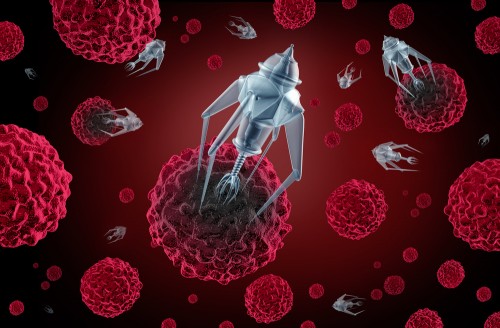Imagine that you want to build a complex array of buildings, similar to a castle. Now, imagine that once you put all the separate components together, the castle builds itself automatically. Now, imagine that this castle is so small that its dimensions are on the scale of DNA, viruses and small molecules. This is the world of researcher Eric Henderson, professor of genetics and cellular and developmental biology at the University of Iowa

[Translation by Dr. Nachmani]
Tiny machines that build themselves and detect diseases? Enter the nanometer world of one of the most advanced laboratories in the world.
Imagine that you want to build a complex array of buildings, similar to a castle. Now, imagine that once you put all the separate components together, the castle builds itself automatically. Now, imagine that this castle is so small that its dimensions are on the scale of DNA, viruses and small molecules. This is the world of researcher Eric Henderson, professor of genetics and cellular and developmental biology at the University of Iowa.
The researchers in his lab looked at how to build nanomachines that could contribute in the near future to the development of real-world medical applications. The researchers succeeded in developing such a nanomachine that detected the structure of the Ebola virus. The researchers explain that a machine of this type could be useful in the developing world, where access to equipment used for medical diagnosis is rare and limited. The lead researcher claims that his nanotechnology can be produced cheaply and interpreted with extreme ease. If you put this technology together in smartphone apps, almost anyone can use it to detect viruses, such as Ebola, or diagnose a number of other diseases and disease-causing organisms without the need for traditional medical facilities.
The researcher explains that the basic idea lies in understanding the rules governing the activity of DNA. "Once these rules are understood, they can be exploited to obtain unique advantages in the fields of medicine and biotechnology," said the researcher. The double helix structure of DNA means that one strand of DNA will only connect to and match the opposite strand. And what's more, these matching strands "find" each other automatically, like a castle building itself. The researchers harnessed these principles precisely to build his nanomachines. The different components, from the moment they were mixed with water and then heated and cooled, find each other and cluster as required without requiring any additional effort.
These nanomachines function as a diagnostic tool that detects various diseases at the genetic level. As part of their research, the scientists developed machines that look for and find clues to the presence of the Ebola virus, despite the fact that the researchers used a simulated version of the virus's genome and not its actual genome. The researchers used an integrated photonic system that examines the presence of the target molecules. If the machine "spots" its target, the photonic system emits light that can be detected with a device called a fluorometer. The researcher claims that this technology will be able to locate different types of disease-causing molecules or organisms, and will thus allow anyone, anywhere, to perform diagnostic tests without the need for medical facilities. Also, he predicts that similar nanomachines could be used to precisely transfer drugs at the required moment. These nanomachines, which consist of DNA strands, actually wrap the drug and direct it to the required target.
The news about the study
